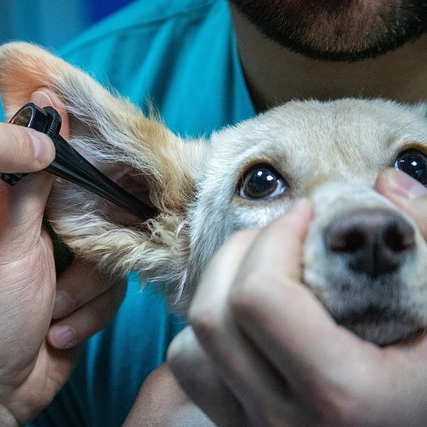Spain is a country where pets are quite popular, and many people have pets as part of their families.
The most common pets are pet dogs and cats, but there are also other popular choices. Here are some insights into dogs and cats in Spain.

Dogs are extremely popular in Spain.
Many Spanish households have at least one dog, and they are often seen as loyal companions and part of the family.
You’ll find a wide variety of dog breeds in Spain, ranging from small breeds like Chihuahuas and Yorkshire Terriers to larger breeds like Spanish Mastiffs and Spanish Water Dogs.
Spain also has its own native breed, the Spanish Greyhound or Galgo Español, which is commonly used for hunting.
Cats are also well-loved in Spain.
They are known for their independent nature and are often kept as indoor pets.
You’ll find various cat breeds in Spain, but mixed-breed cats are quite common as well.
There are numerous cat rescue organizations and shelters throughout the country that work to protect and care for stray and abandoned cats.
It’s worth mentioning that animal welfare and responsible pet ownership are important aspects in Spain.
There are various organizations, both governmental and non-governmental, that promote the well-being of pets and work to prevent animal cruelty.
It is also required by law in Spain to have dogs properly identified with a pet microchip and registered in a national pet registry.
Unfortunately, dogs and cats are still dumped in the streets. There are many pet rescues filled with unwanted cats and dogs.
In Spain, there are several rules and regulations regarding pets to ensure their welfare and responsible ownership. Here are some key rules in Spain.
Dogs in Spain are required to be microchipped for identification purposes. The pet microchip should comply with ISO standards, and the dog owner is responsible for ensuring the microchip is registered with the Spanish pet
registry.
Dogs must be registered with the local municipality where the owner resides. The registration process typically involves providing the dog’s microchip details and other relevant information. Registration fees may apply.
When in public places, dogs must be kept on a leash and under control at all times. There are designated areas, such as dog parks, where dogs can be off leash, but it is important to comply with local regulations.
Dog owners are responsible for cleaning up after their pets in public areas. It is mandatory to carry bags or other means of cleaning up dog waste and disposing of it properly.
Certain breeds or types of dogs are classified as potentially dangerous dog in Spain. Ownership of such dogs is subject to specific regulations, including obtaining a license, liability pet insurance, and complying with additional
safety measures.
Pet owners are responsible for preventing excessive noise caused by their pets, particularly barking, that may disturb neighbours or the general public.
Spain has laws in place to protect the welfare of animals, including pets. It is illegal to mistreat or abuse animals, and severe penalties can be imposed for acts of animal cruelty.
These rules may vary slightly depending on the region or municipality within Spain, so it is advisable to check with the local authorities or town hall for specific regulations in your area.
Compliance with these rules ensures the well-being of pets, promotes public safety, and fosters harmonious coexistence between pet owners and the community.


When taking dogs to Spain, there are specific requirements that need to be fulfilled to ensure a smooth entry into the country. Here are the general requirements for bringing dogs to Spain:

Your dog must have a microchip implanted for identification purposes. The microchip should comply with ISO standards and be readable by a compatible scanner.
Your dog must get a dog’s rabies vaccination. The vaccination should be administered at least 21 days before traveling to Spain, but not more than one year prior to travel. Ensure that your dog’s rabies vaccination is up to date. Make
sure to check if your dog needs a primary or booster vaccination.
Obtain a dog’s EU pet passport, an official document issued by a veterinarian. The pet passport should contain your dog’s identification information, including microchip details, rabies vaccination information, and other relevant vaccinations
or treatments.
Dogs entering Spain from certain countries, including the United Kingdom, Ireland, Finland, and Malta, may require treatment for tapeworm. The treatment should be administered by a veterinarian 24 to 120 hours before entering Spain,
and it should be recorded in the pet passport.
Although not always required for entry from EU countries, it is advisable to carry a health certificate issued by a veterinarian, stating that your dog is in good health and fit for travel. An Animal Health Certificate is required
when moving from the UK to Spain.
Certain dog breeds may be subject to restrictions in Spain due to local regulations or pet insurance requirements. It’s important to research and confirm if any specific breed restrictions apply to your dog.
Whether you are traveling to Spain by car, train, or plane, it’s essential to ensure your dog’s safety and comfort during the journey. If you plan to fly, check with the airline for their specific pet travel policies and requirements,
including crate size and any additional documentation they may require.
It’s important to note that these requirements can change, so it is recommended to contact the Spanish Embassy or Consulate in your home country or check with the Spanish Ministry of Agriculture, Fisheries, and Food (Ministerio de
Agricultura, Pesca y Alimentación) for the most up-to-date information and requirements regarding bringing dogs to Spain. Additionally, consulting with your veterinarian is crucial to ensure compliance with all the necessary requirements
for your dog’s travel to Spain.
You can also use a pet transport company. They will be up to date with all the rules and regulations which will make your travel to Spain a whole lot easier.
In Spain, the identification of pets, particularly dogs, is mandated by law, and microchipping is a crucial aspect of this process. Here are some details about pet identification and microchips in Spain:

It is mandatory in Spain for all dogs to be microchipped.
This applies to both Spanish residents and visitors bringing their dogs into the country.
The microchip serves as a permanent form of identification for the dog.
The microchip used for identification purposes in Spain must comply with ISO standards (ISO 11784 and ISO 11785).
These standards ensure compatibility with microchip scanners used by veterinarians, animal shelters, and authorities.
Once a dog has been microchipped, the owner is responsible for registering the microchip details in the Spanish pet registry.
The registration process includes providing information about the dog, such as breed, age, sex, and owner’s contact details.
This registration helps authorities trace the dog’s owner if it is lost or found.
It is essential to keep the microchip information up to date.
If there are any changes in the dog’s ownership or contact details, such as a change of address or phone number, the owner must update the information in the pet registry to ensure accurate identification.
When obtaining a European pet passport for travel purposes, the microchip information is recorded in the document.
This helps ensure proper identification of the dog during international travel.
Microchipping provides a reliable method of identification for dogs in Spain, which is essential for reuniting lost pets with their owners.
It also plays a crucial role in ensuring responsible pet ownership and compliance with regulations.
It’s important to consult with a veterinarian to ensure that the microchip used for your pet complies with the required standards and to complete the necessary registration and documentation procedures.
To obtain an Animal Health Certificate for your pet within 10 days of your travel date, you will need to follow these general steps.
Remember, the requirements and procedures for obtaining an Animal Health Certificate may vary depending on the destination country and specific regulations. It’s recommended to contact your veterinarian well in advance and inquire
about the requirements for the country you’re traveling to. If your veterinarian is not an Official Veterinarian, they are likely to know one. They can provide you with accurate information and guidance based on their expertise and
knowledge of the specific destination.

Traveling with your dog from the UK to Spain and back requires careful planning and adherence to certain steps to ensure a smooth and comfortable journey. Here are six steps to follow.
– Ensure that your dog is microchipped with a compliant ISO microchip before travel. This is a requirement for international travel.
– Verify that the microchip details are up to date with your contact information.
– Ensure your dog’s routine vaccinations, including the valid rabies vaccination, are up to date.
– Schedule a visit to the veterinarian for a general health check and to confirm your dog is fit for travel.
– If your dog hasn’t been vaccinated against rabies or if the previous vaccination has expired, arrange for a rabies vaccination.
– Note that there is typically a mandatory waiting period after the rabies vaccination (21 days) before your dog can travel.
– Obtain a European pet passport or AHC from your veterinarian. The pet passport will include essential information such as identification, vaccinations, and health records.
– Ensure all required information is accurately recorded in the pet passport or Animal Health Certificate.
– Choose a suitable mode of transportation for your dog, such as traveling by car, plane, or ferry.
– If traveling by plane or ferry, contact the respective carrier well in advance to understand their pet travel policies, requirements, and any necessary documentation. Also inquire if they have pet friendly cabins.
– You can also use a pet transport company like The Transpawter to arrange the transport for you.
– Before returning to the UK from Spain, make sure to comply with the UK’s entry requirements for pets.
– Check the UK government’s official website for the most up-to-date information on returning with your dog, including any specific documents or tests required.

You can also use a pet transport company like The Transpawter that will take care of the travel of your dog to Spain for you.
Remember to consult with your veterinarian throughout the process to ensure compliance with all necessary regulations and to address any specific health or travel concerns regarding your dog. Additionally, it is advisable to research
and familiarize yourself with the specific rules and regulations of both Spain and the UK regarding pet travel to ensure a smooth and stress-free journey for you and your furry companion.
If you prefer to use a pet transport company to transport your dog to Spain and back, here are some steps to follow.
– Conduct thorough research to find a reliable and reputable pet transport company that specializes in international pet travel.
– Read reviews, check their credentials, and ensure they have experience in handling journeys between the UK and Spain.
– Get in touch with the pet transport company well in advance of your planned travel dates.
– Provide them with details about your dog, including breed, size, and any specific requirements or considerations.
– Coordinate with the pet transport company to determine the best travel dates and itinerary for your dog’s journey.
– They will help you plan the logistics, including transportation arrangements, routes, and any necessary layovers.
– The pet transport company will handle the logistics of transporting your dog from the UK to Spain and back.
– They will coordinate the necessary transportation, whether it’s by air, road, or a combination of both.
– They will also arrange any required accommodations or rest stops during the journey.
– Confirm with the pet transport company the specific documentation needed for your dog’s travel.
– Typically, you will need to provide vaccination records, health certificates, and microchip information.
– Throughout the travel process, maintain regular communication with the pet transport company. The Transpawter sends you daily updates with photos and videos.
– They should provide updates on your dog’s journey, including any delays or changes in the itinerary.
– Be prepared to be available to receive your dog upon its arrival back in the UK or Spain.

Make sure to thoroughly discuss the details, costs, and any specific concerns with the pet transport company before finalizing the arrangements.
To comply with the UK’s requirements, if you are traveling from Spain (or any other EU country) back to the UK with your dog, you need to have them treated for tapeworm by a veterinarian in the EU between 1 and 5 days before your return.
Here’s how you can go about it.
Find a reputable veterinarian clinic in the EU country where you are staying. Look for a clinic that is experienced in providing tapeworm treatment for pets.
Contact the veterinarian clinic and schedule an appointment for your dog’s tapeworm treatment. Inform them about the specific requirement of the treatment being administered between 1 and 5 days before your return to the UK. Most veterinarians
in Spain speak English or have English-speaking employees.
When visiting the veterinarian, bring your dog’s identification documents, such as the pet passport, health certificate, and any other required documentation.
Ensure you have all the necessary paperwork to prove your dog’s identity, vaccinations, and previous treatments.
The veterinarian will administer the tapeworm treatment to your dog, following the appropriate dosage and administration guidelines.
Make sure to obtain a written certificate or record from the veterinarian that confirms the date and details of the tapeworm treatment.
Retain the written certificate or record provided by the veterinarian as proof of the tapeworm treatment.
Ensure that the certificate includes your dog’s identification information, date of treatment, veterinarian’s details, and signature.
When you return to the UK, have the tapeworm treatment certificate ready for inspection by the UK authorities, if requested.
The certificate should be presented along with other required documents during the border control process.

It’s important to note that these requirements may be subject to change, so it is advisable to double-check the latest regulations on the UK government’s official website or consult with your veterinarian for the most up-to-date information.
If you are moving your dog to Spain from another EU country, there are certain steps and requirements to consider ensuring a smooth transition for your pet. This is what you should consider.
1. Microchip
2. EU Pet Passport
3. Vaccinations
4. Tapeworm Treatment
5. Health Certificate: Although not always mandatory for travel within the EU, it is recommended to obtain a health certificate from your veterinarian before moving your dog to Spain. The health certificate confirms that your pet is
in good health and fit for travel.
6. Travel Arrangements
7. Check Spanish Regulations: Familiarize yourself with any specific regulations or restrictions imposed by Spain on pet ownership. It is advisable to contact the Spanish embassy or consulate or consult official Spanish government
websites for the most up-to-date information.
8. Finding a Veterinarian in Spain: Once you arrive in Spain, find a local veterinarian who can provide ongoing healthcare for your pet. They can also guide you on local regulations, vaccinations, and any additional requirements specific
to your new location in Spain.
It’s important to note that while these are general guidelines, there may be additional requirements or variations in regulations depending on the specific circumstances and the region in Spain you are moving to.

If you are planning to move to Spain with your pet from the UK, there are several steps and requirements to consider. Here is a general guide to help you with the process.

1. Microchip
2. Rabies Vaccinations
3. Tapeworm Treatment
4. Pet Passports from the UK are not valid in Spain.
5. Animal Health Certificate: Instead of a pet passport your pet will need an Animal Health Certificate. Only an Official Veterinarian can issue an AHC.
6. Travel Arrangements: You can travel to Spain with your pet yourself or you can use a pet transport company like The Transpawter.
7. Check Spanish Regulations: Familiarize yourself with the specific regulations and requirements for pets in Spain. These may include leash laws, breed restrictions, and registration requirements. Contact the Spanish embassy or consulate
or consult official Spanish government websites for the most accurate and up-to-date information.
8. Pet-Friendly Accommodation: When looking for accommodation in Spain, ensure that your new residence allows pets. Some landlords or housing communities may have restrictions or additional requirements for pets.
9. Find a Veterinarian in Spain
It’s important to note that requirements and regulations can change, so it’s recommended to consult with your veterinarian and relevant authorities in both the UK and Spain to ensure compliance with all necessary regulations for moving
with your pet.
When bringing a pet to Spain or living in Spain with a pet, there are several diseases that pet owners should be aware of. Here are some common diseases in Spain that can affect pets.
It’s important to consult with a veterinarian in Spain for specific guidance and to ensure your pet is up to date on vaccinations, receives regular preventive treatments, and undergoes routine health check-ups.
Spain is generally considered a cat-friendly country. Cats are a common sight in many cities and towns, and the local population often keeps cats as pets.
It’s important to note that attitudes and practices regarding pets can vary among individuals and regions.
Yes, according to Spanish regulations, cats must be microchipped. Microchipping is mandatory for both cats and dogs in Spain.
If you already have a cat and are moving to Spain, it’s important to ensure that your cat is microchipped and that the microchip information is up to date.
Remember that microchipping is not only a legal requirement in Spain but also a crucial means of identification and reuniting lost cats with their owners.
Yes, you can take your dog on a ferry to Spain. Many ferry companies allow pets on board, but it’s important to check the specific policies and requirements of the ferry company you plan to use.
Also check if they have pet friendly cabins. If your dog is prone to seasickness or anxiety, consult with your veterinarian about possible medications or remedies that can help alleviate their discomfort.
Yes, you can obtain an EU Pet Passport in Spain. The EU Pet Passport is a standardized document that allows for the easy movement of pets within the European Union member states, including Spain.
It contains important information about your pet, including their microchip number, rabies vaccination details, and owner’s information.
In Spain, there are specific rules and regulations regarding traveling with dogs in cars to ensure their safety and the safety of other road users. Here are some important rules for dogs in cars in Spain:
1. Restraint: Dogs must be properly restrained while traveling in a car. They should not be allowed to roam freely inside the vehicle.
2. Positioning: Dogs should be positioned in a way that does not obstruct the driver’s view or interfere with the operation of the vehicle’s controls.
3. Prohibition of Unattended Dogs: It is illegal to leave a dog unattended in a vehicle under conditions that could endanger its health or safety.
4. Ventilation and Temperature: If a dog is transported in a car, it’s important to ensure proper ventilation. It’s crucial to avoid exposing the dog to extreme temperatures, whether it’s too hot or too cold.
5. Cleanliness and Hygiene: Dogs should be transported in a clean and hygienic environment.
It’s important to note that these rules apply to all dogs traveling in cars in Spain, including both local residents and visitors. Violating these rules can result in fines or other legal consequences.